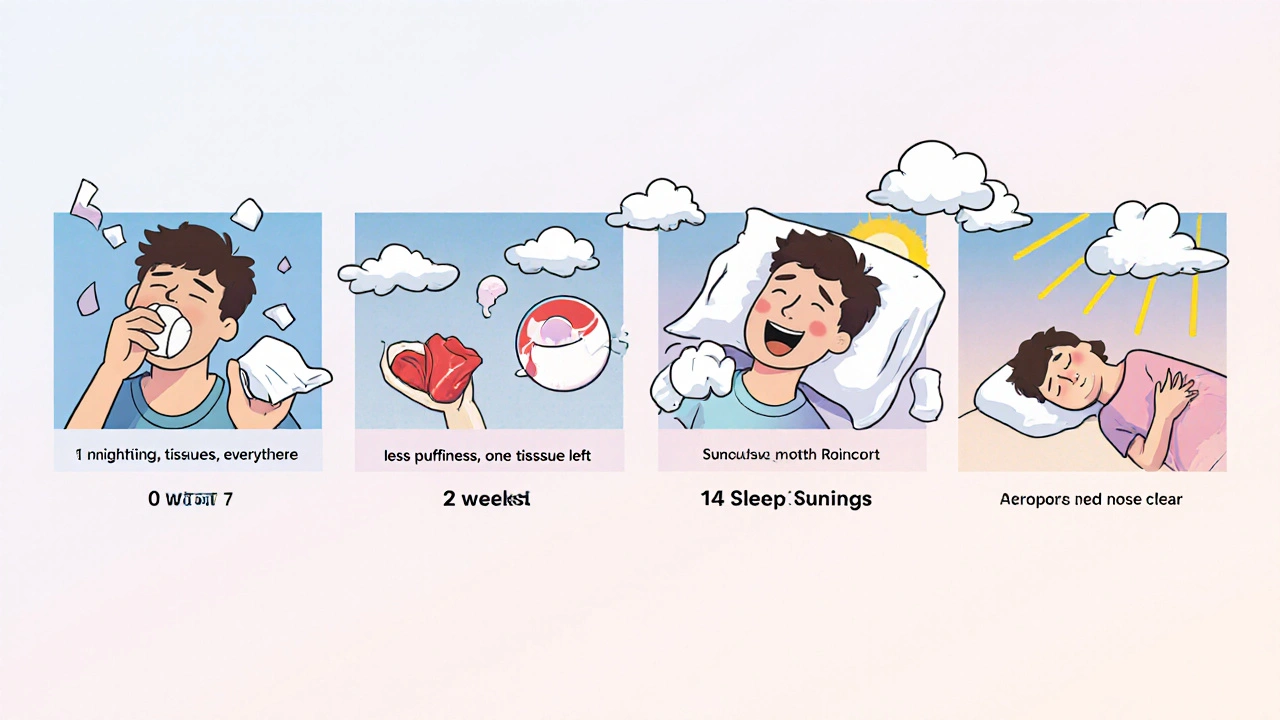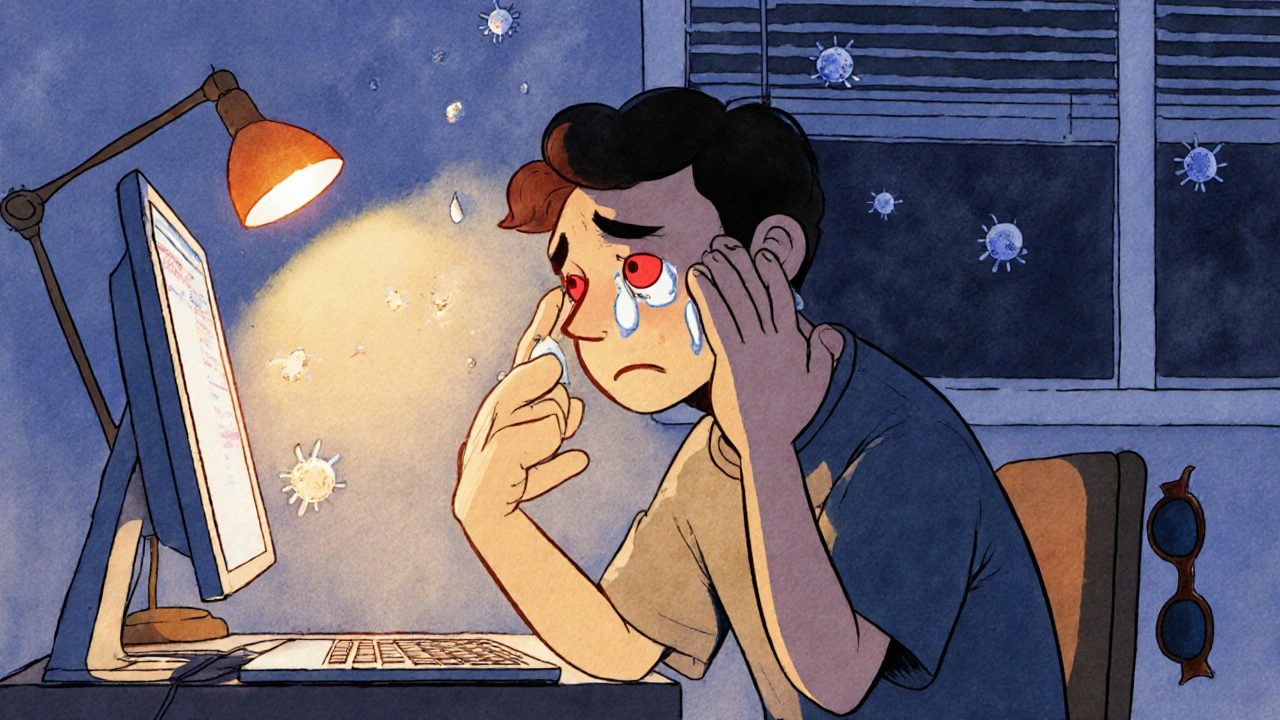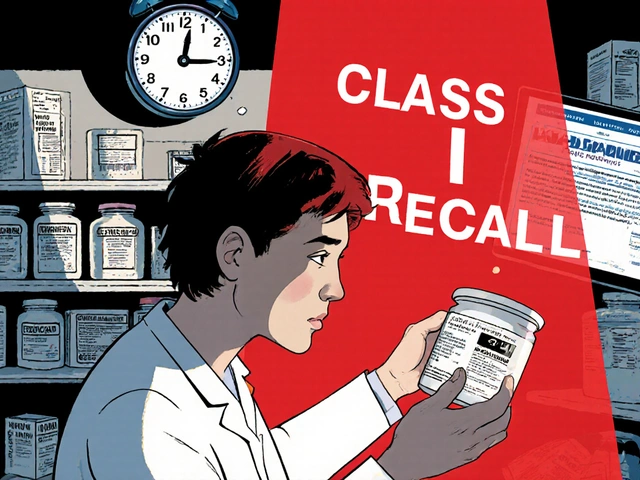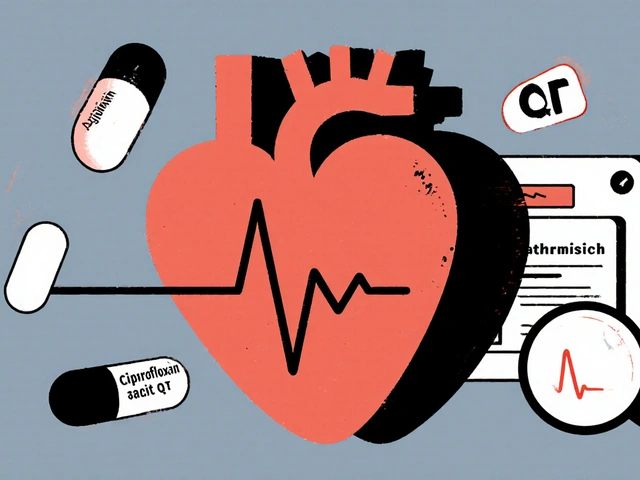Rhinocort is a nasal spray used to treat allergy symptoms like a runny nose, sneezing, and nasal congestion. Unlike oral antihistamines that make you drowsy, Rhinocort targets the source of inflammation right in your nose. It doesn’t just mask symptoms-it reduces the swelling and irritation caused by allergens like pollen, dust, or pet dander. If you’ve tried pills that leave you sluggish or eye drops that don’t touch your nose, Rhinocort might be the missing piece.
What’s in Rhinocort?
Rhinocort contains budesonide, a corticosteroid. That sounds scary if you’ve heard bad things about steroids, but this one isn’t the kind bodybuilders use. Budesonide is a local steroid, meaning it works exactly where you spray it-in your nasal passages. Very little gets into your bloodstream. Think of it like painting a wall: you’re only covering the area you need, not the whole house.
It takes a few days to start working fully. Most people notice improvement after 3 to 5 days, but it can take up to two weeks for full relief. This isn’t a quick fix like a decongestant spray. If you stop using it too soon because you don’t feel instant results, you won’t get the benefit. It’s a maintenance treatment, not a rescue one.
Who should use Rhinocort?
Rhinocort is approved for adults and children as young as 6 years old. It’s most helpful for people with allergic rhinitis-whether it’s seasonal (like hay fever in spring) or year-round (triggered by dust mites or pet hair). If your nose is constantly stuffy, you’re breathing through your mouth at night, or you get headaches from blocked sinuses, Rhinocort can help.
It’s not meant for colds or infections. If you have a fever, green mucus, or facial pain, you might have a sinus infection, not allergies. Rhinocort won’t help with that. In fact, using it when you don’t need it could delay proper treatment.
How to use Rhinocort correctly
Using a nasal spray wrong is like trying to water a plant with a hose aimed at the pot’s side-you waste most of it. Here’s how to get it right:
- Blow your nose gently before spraying to clear out mucus.
- Shake the bottle well.
- Tilt your head slightly forward-don’t lean back. Looking up can make the spray drip down your throat.
- Close one nostril with your finger. Insert the nozzle into the other nostril, pointing it slightly outward toward your ear, not straight up.
- Breathe in gently through your nose as you press the pump. One spray per nostril, once a day, unless your doctor says otherwise.
- Don’t sniff hard after spraying. Wait a few seconds before blowing your nose again.
Many people spray too hard or aim too high, which causes the medicine to land on the sensitive wall of the nose instead of the inflamed tissue inside. That’s why some people get nosebleeds or irritation-it’s technique, not the drug.

Side effects and safety
Most people tolerate Rhinocort well. The most common side effects are mild: dryness or irritation in the nose, a bad taste, or the occasional nosebleed. These usually go away after a few days as your nose adjusts.
Serious side effects are rare. Long-term use at high doses can, in very rare cases, affect growth in children or weaken the immune system slightly. That’s why doctors usually start with the lowest effective dose-often just one spray per day. If you’re using it for months or years, your doctor may check in every 6 to 12 months.
Don’t use Rhinocort if you’ve recently had nasal surgery or have an untreated nasal infection. If you’ve had tuberculosis or eye problems like glaucoma or cataracts, tell your doctor before starting. It’s safe during pregnancy and breastfeeding, but always check with your healthcare provider first.
Rhinocort vs. other nasal sprays
There are dozens of nasal sprays on the shelf. Here’s how Rhinocort stacks up against the most common alternatives:
| Product | Type | Start Time | Duration | Best For |
|---|---|---|---|---|
| Rhinocort | Corticosteroid | 3-14 days | 24 hours | Chronic allergies, long-term use |
| Flonase | Corticosteroid | 3-14 days | 24 hours | Similar to Rhinocort, slightly more expensive |
| Afrin | Decongestant | Minutes | 12 hours | Short-term relief only (max 3 days) |
| Zyrtec Nasal | Antihistamine | 30 minutes | 24 hours | Fast relief for sneezing and runny nose |
| NasalCrom | Mast cell stabilizer | 1-4 weeks | 4-6 hours | Mild allergies, prevention |
Rhinocort and Flonase are nearly identical in effectiveness. The main difference is price and availability. In the UK, Rhinocort is often cheaper than Flonase when bought over the counter. Zyrtec Nasal works faster but doesn’t help as much with congestion. Afrin gives instant relief but can cause rebound congestion if used longer than 3 days-making your nose worse over time.
What to expect after starting Rhinocort
After 1 week, you might notice your nose feels less stuffy, especially in the morning. After 2 weeks, you’ll probably sleep better, your voice won’t sound nasal, and you might stop reaching for tissues every 10 minutes. Many people report fewer headaches and less fatigue because they’re finally breathing through their nose again.
If you don’t feel better after 4 weeks, talk to your doctor. It could be that your symptoms aren’t allergic, or you need a higher dose. Some people need to combine Rhinocort with an oral antihistamine, especially if they also have itchy eyes or throat.
Don’t expect miracles overnight. But if you stick with it, Rhinocort can turn a miserable allergy season into something manageable. It’s not a cure-but for many, it’s the closest thing to one.

When not to use Rhinocort
There are a few situations where Rhinocort isn’t the right choice:
- You have a nasal ulcer, open sore, or recent injury inside your nose.
- You’re currently treating a fungal, bacterial, or viral nasal infection.
- You’ve had cataracts or glaucoma and haven’t discussed steroid use with your eye doctor.
- You’re under 6 years old-unless prescribed by a paediatrician.
- You’re using other steroid medications (like inhalers or creams) and haven’t checked for cumulative effects.
If you’re unsure, it’s always better to ask a pharmacist or GP. They can help you decide if Rhinocort fits your symptoms-or if something else would work better.
Where to get Rhinocort
In the UK, Rhinocort is available over the counter at pharmacies like Boots, Superdrug, or Tesco Pharmacy. You don’t need a prescription. The standard dose is one spray in each nostril once daily. A 120-spray bottle lasts about 60 days with regular use.
Generic versions of budesonide nasal spray exist and are often cheaper. Ask your pharmacist if they have a generic option-it’s the same active ingredient, just a different brand name. The spray mechanism might feel slightly different, but the effect is identical.
Final thoughts
Rhinocort isn’t flashy. It doesn’t come with a catchy slogan or a celebrity endorsement. But for millions of people with allergies, it’s the quiet hero that lets them breathe again. It’s not for everyone, but if you’ve tried antihistamines that make you sleepy or decongestants that backfire, Rhinocort deserves a fair shot.
Use it correctly. Give it time. Don’t stop too early. And if it works for you? You might wonder why you didn’t try it sooner.
Can I use Rhinocort every day for years?
Yes, Rhinocort is designed for long-term daily use if needed. Studies show it’s safe for adults and children over 6 when used as directed. Doctors typically recommend the lowest effective dose-often just one spray per nostril daily. If you’ve been using it for more than a year, it’s a good idea to have a check-up to make sure there are no side effects like nasal thinning or changes in vision.
Does Rhinocort cause weight gain?
No, Rhinocort doesn’t cause weight gain. The budesonide in Rhinocort is a local steroid that barely enters your bloodstream. Unlike oral steroids (like prednisone), which can cause fluid retention and increased appetite, nasal sprays like Rhinocort don’t affect your metabolism. Weight gain is not a known side effect.
Can children use Rhinocort?
Yes, Rhinocort is approved for children aged 6 and older. The usual dose is one spray in each nostril once daily. For younger children, it’s important to use the spray correctly-many parents find it helps to use it while the child is sitting upright, with a parent helping to aim the nozzle. Always check with a paediatrician before starting any new medication.
Is Rhinocort better than Flonase?
Rhinocort and Flonase are equally effective for most people. Both contain corticosteroids that reduce nasal inflammation. The main differences are price and availability. In the UK, Rhinocort is often less expensive than Flonase. Some people find one spray easier to use than the other due to the nozzle design, but the results are very similar. If one doesn’t work well for you, try the other.
What if I miss a dose?
If you miss a dose, spray it as soon as you remember. But if it’s almost time for your next dose, skip the missed one and go back to your regular schedule. Don’t double up to make up for it. Rhinocort works best with consistent daily use, but an occasional missed day won’t ruin its effect.
Can I use Rhinocort with other allergy meds?
Yes, Rhinocort can be safely combined with oral antihistamines like cetirizine or loratadine, or eye drops for itchy eyes. Many people use a combination approach: Rhinocort for nasal symptoms and a pill or drops for other allergy signs. Always check with a pharmacist if you’re taking multiple medications to avoid interactions.




Ancel Fortuin on 20 November 2025, AT 05:05 AM
Let me guess - you’re one of those people who thinks ‘steroid’ means ‘bodybuilder juice’ and now you’re scared of your own nose? Budesonide isn’t going to turn you into a Hulk. It’s not even getting into your bloodstream enough to affect your mood, let alone your biceps. If you’re still paranoid, maybe try breathing through your mouth for a decade and see how that works out.